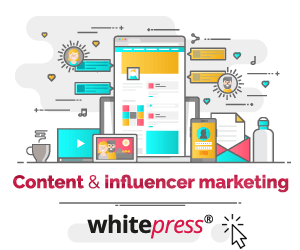Email marketing is one of the tried and true tactics of digital marketing. Newsletters can generate huge returns when you target a loyal audience with great content.
Email has a median ROI of 122% – over 4x higher than other marketing formats, including social media, direct mail, and paid search. If you have valuable content to share with your subscribers on a consistent basis, and the time and resources to commit to the development, email newsletters are a safe (and smart) bet.
5 guiding questions you need to ask yourself
- Why are you doing this? It takes time and resources to deliver a high-quality newsletter, that’s why you have to be sure you have set goals in place to work against so that everything is worthwhile. Most common goals marketers set for their newsletters are: driving sales, boosting engagement, fostering retention or loyalty.
- How are you doing this? Find the needed resources, decide if you can do this in-house or externally. Take your time to plan, write, design, measure, and manage the program. Check all the e-mail marketing tools like MailChimp or Mad Mimi – the perfect tool should provide managing your subscriber list, reporting, and help ensure that you stay out of spam filters and in-line with all the regulations and best practices.
- Who’s getting it? Think about who’s going to receive your e-mails, make a list and segment it. If you want to run an e-mail campaign for e-commerce, you should include: demographics, geography, products purchased, frequent buyers, and/or lapsed customers.
- What’s in it? Gather your content. Most of e-mail newsletters send: product info/announcements, tutorials, how-tos, social media posts, graphics, news, events, and special promotions and sales.
- How are you promoting it? Build your list – do you want to use newsletter sign-up button to your site, or promote it through social media?

E-mail newsletter design tips
There are two options for you when it comes to designing an e-mail campaign. You can choose one from a collection of e-mail templates that most e-mail marketing platforms provide, or you can design your own using HTML language. It doesn’t matter what are you going to choose, just remember these things:
- Less is more. Do not overstimulate your subscribers.
- A perfect newsletter is mobile-friendly and responsive. Link and buttons must be short and easy to click.
- The primary CTA must be the most prominent, so that you can drive the most eyes and clicks there. A visual hierarchy for CTAs is something you should keep in mind.
- Design consistency is crucial. Each and every single e-mail should look familiar, not only for your own sanity, but it’s just easy to adapt your content to fit the design rather than vice versa.
- Test it out with different e-mail clients, browsers, so that you can be sure it renders properly. Do not forget to look at the plain text version – some e-mail client may have problems with HTML.
- The image alt text – provide a description to show in place of the image. Sometimes users may have images disabled.
- Include a footer with an address and make sure your subscribers can find an unsubscribe option.

11 E-mail newsletter dos and don’ts
- Keep it vertical. Many find it tempting to cover every part of their business in one overwhelming newsletter, but a best practice is to develop several different newsletters, each tailored to a specific vertical. This lets your audience pick the topics they’re most interested in, which helps boost newsletter engagement
- Let your subscribers choose the topics they might be interested in, and explain what they’ll get. If you give them options, you’re guaranteed a more engaged newsletter audience. Just be clear. Tell your subscribers what kind of content they can expect, how often – it all can minimise the chances of massive unsubscribes.
- People do not have time to read every single word you send to them. Write a lead with your best content and most important news. They’ll probably lose interest before they reach the end.
- If it looks crowded and time-consuming, people may not read it at all. Your e-mail should be as short, as possible, so that you won’t overwhelm your subscribers with too much content.
- It’s not only about your product or promotion. Really it’s not. Keep it simple – 90% of your content should be educational, 10% promotional.
- No one wants to be spammed, so be consistent with your delivery schedule and the frequency. Do not send 15 e-mails daily. You wouldn’t like to be your own subscriber, would you?
- Make them curious about your subject lines. „DO NOT make these makeup mistakes” is better than „[Company Name] Newsletter for [Date]”, isn’t it? Give a sense of urgency.
- Give them premium content. They are your fans, so provide some exclusive offers, sales, promotions, sneak peeks, behind-the-scenes access, or whatever else you think they’d appreciated.
- Test it out ten times. Of fifteen times. Test subject lines, layouts, buttons, dates, everything you can test.
- Don’t you even think about spamming your beloved subscribers. Respect the fact that someone said yes by signing in to your newsletter and do not ruin it.
- Don’t neglect the footer. It is important to pay as much attention to the footer as it is to the header. It’s the element that rounds off the communication and you should take advantage of this section to give the reader your contact information so that they can communicate with you or give you feedback if they want. It’s also a good moment to encourage the reader to share the information with their friends by email or through social networks.

How to measure newsletter success
So you have all behind – designing, writing, and sending parts. Now it’s time to wait a few days so that every recipient has a chance to open it and read your newsletter. After these few days, you should start measuring engagement. Remember about: open rate, delivery rate, click through rate, conversions, unsubscribers, list growth, share rate, and ROI.
- Open rate
Usually, it’s around 32%. Remember that if a recipient’s e-mail client doesn’t load images, then the e-mail won’t be reported as opened. Beware when measuring open rate. - Click-through rate
The average CTA for e-mail is 4%. If yours is below that, think about what might have gone wrong. Take a look at your list segmentation again, make sure your newsletter displays on mobile correctly and that everything is as it should be.
You may also want to look at the Click to Open Rate (CTOR), which divides total unique clicks by unique opens. This is a better measure of the value of your content, although again, it’s tricky given the unreliable open rate. A standard CTOR is between 20-30%. - Conversions
For conversions, look at any specific CTAs that were in the newsletter – was there a special offer promo or a link to a form? Or were there actions taken on the site after a click-through from the newsletter that you can track (like a purchase, or a contact us form completion)? How does the conversion rate compare to other marketing campaigns? - Delivery rate
It’s simply the number of e-mails that were sent, minus bounces, divided by the number of e-mails sent. You should take this metric from your e-mail provider. The perfect delivery rate is around 95% or better. - Unsubscribers
Do not stress out. It’s common that people unsubscribe newsletter every day. Keep your eye on this metric and if it’s higher than 1%, investigate why is that. Maybe your design is the reason that people unsubscribe your e-mail campaign, or perhaps it’s the content or both. Remember that many people don’t bother to unsubscribe, they just ignore e-mails you send them. This is why CTR and conversions are way more important than that. - List growth
The more people who subscribe, the more eyes and potential customers you can send to your site. Because of unsubscribes, email address changes, and other factors, your list will shrink over time. To combat this, keep up the growth by regularly promoting your newsletter on your site and in social media, and by making the sign-up process as easy as possible. - Share rate
First, give your subscribers a chance to share your content. Then, calculate how often your content is shared. Simple as that. - ROI
Let’s say your main goal for the e-mail newsletter is to drive more revenue. ROI is your ultimate measure of success then. You’ll need to have the analytics tracking in place to tie all of the pieces together from a visit through to a sale, but if you can do this, you’re a winner.
Now you know everything that you need to start making email newsletters for your ecommerce business — congratulations!

Using the right e-mail marketing strategy might be a part of your success. Just respect your audience and send them the content you’d want to get. Plan precisely, provide high-quality content, and stay reliable. Measure your efforts and optimise them from time to time when needed. Use these insights to write a successful email newsletter that delivers the value to your email subscribers.









